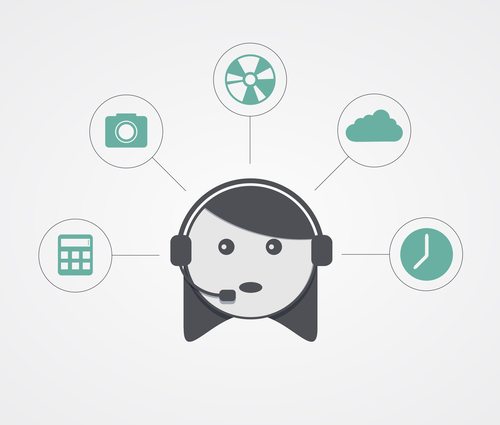
Cloud computing has its roots in the ’60s when computer scientist and psychologist J.C.R. Licklider foresaw an intergalactic computer network connecting every human being. By the turn of the millennium, cloud technology was linking businesses and consumers through shared, high-functioning programs called software as a service (SaaS). The most recent of the transformation in SaaS is cloud-based contact centers that can offer superior customer experience as a fraction of the cost of an in-house center.
The Transformation to the Cloud
Licklider’s idea was embracing, but it was not until the boom of social media that the concept became practical. At their heart, social media platforms are simply shared software packages that specialize in communication. As social media became the norm in our culture, customer care began to move to a real-time, online platform. It was only a small jump to formalize customer communication into contact centers with software platforms entirely offsite. By the time that social media hit our society, we already had robust cloud storage systems that were being used for large data storage and security backup.
What to Expect From Cloud Contact Centers
Cloud technology is no longer simply offsite data storage. We can now share sophisticated software that offers multiple consumer functions, most of which can be automated. Cloud-based contact centers have the ability to do everything that a customer service center can do with the added benefit of moving across marketing channels, integrating text, email and video. The center can blend self-service functions with agent assisted tasks like live chats, telephone answering services and social media communication. The system can be linked into your sales representative’s lead management system, so that trained salespeople can follow up with contacts, generating new sales. The sharing aspect of the software lets representatives interact with other in the department, supervisors and key staff to give the consumer the best possible customer care.
Benefits of Making the Move
Cloud-based contact centers boast their ability to increase staff productivity and speed deploy of new systems, all in a scalable, cost-efficient and up-to-date software environment. According to a study by Nucleus Research Inc., the addition of social interaction functions to the customer relationship management system increased the staff productivity by about 12 percent. This is primarily because the integration allows for more fluid communication and less dropped interactions from staff error. By sharing data resources and software, cloud-based systems can be scaled up or back, depending on need. This lets businesses pay for and use only what they need. Arguably the most important aspect of moving to the cloud is ease of deployment and up-to-date software. Creating a physical contact center requires a lot of leg work. Desks, wiring and telecommunication systems need to be installed just to begin and they need to be updated regularly to be state of the art. Cloud based does not have these issues, allowing the business to decide and deploy almost immediately.
ROI
Every enhancement to your business should come with a return on investment analysis. With customer relationship management, it can be difficult to identify the return since customer experience must be part of the equation. Client surveys and pre-and post-testing are good ways of getting tangible data to use in your analysis. You can also use productivity to generate hard numbers. Determine the amount of time being saved by the new system and calculate a dollar amount based on salaries.

